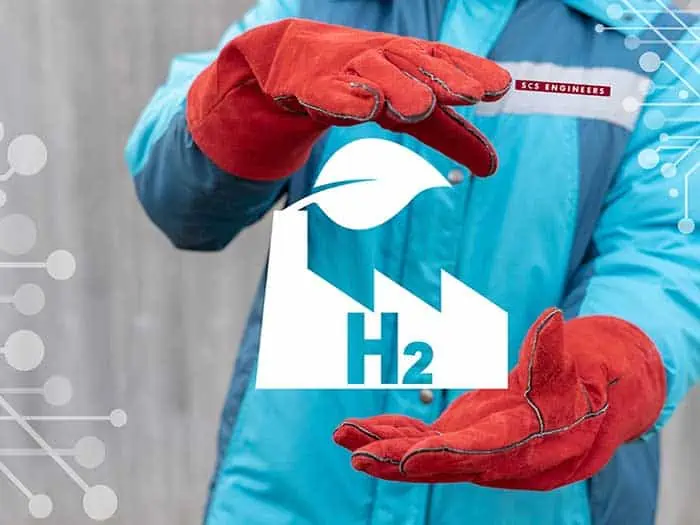


Hydrogen is commonly produced using steam methane reforming (SMR), which requires heat, a catalyst, and feedstock such as natural gas. SMR operations generate atmospheric emissions from combustion and process vents which may require air permitting. Air permitting can be a complicated process that delays facility construction and project start-up.
Comprehensive feasibility studies include phases to facilitate pre-application meetings and submission of a complete air permit application in a timely, cost-effective manner. Based on our case studies, SCS suggests a four-phase approach.
Phase 1: Preparation and Due Diligence
To begin the evaluation, your engineer compiles all available project information, such as plot plans, process flow diagrams, equipment lists with specifications, zoning, grading, and utilities. Since project specifications are subject to change, your engineer must remain flexible and iterative in their analysis approach as new data becomes available.
Phase 2: Emissions Analysis
The next phase is to calculate the project’s potential to emit criteria pollutants and greenhouse gases (GHGs). The calculation assesses potential requirements for Best Available Control Technology (BACT), emission offsets, Title V, and climate change mitigation. Always use an engineering firm with expertise in GHG emissions inventories and third-party verification of GHG emission inventories and reduction credits. Here’s why, based on the analysis, your engineer will be looking for these factors to smooth the application process:
Project emissions complied with BACT limits based upon a comparison to other permitted SMR facilities.
Project emissions that require the purchase of carbon credits on an ongoing basis to comply with Cap and Trade regulations.
Project emissions that do not trigger the need for emission offsets or Title V.
Phase 3: Regulatory Review
Conducting a regulatory review will identify potential requirements from local regulations such as California’s South Coast Air Quality Management District (SCAQMD). Using SCAQMD as an example, the project must comply with the additional rules.
Phase 4: Results and Conclusions
The comprehensive feasibility study summarizes the potential air quality permitting thresholds, requirements, costs, and schedule for your project. It includes all conclusions and supporting data for decision-making. With a comprehensive study in hand, your project is more sustainable, and you have valuable answers during discussions leading to obtaining a complete air permit.
SCS has over 50 years of environmental experience and trusted working relations with regulatory agencies. Many local, state, and federal agencies attend our free webinars, and industry associations request our input and insight when agencies are planning new rules. We serve as expert witnesses. If you’d like to learn more about developing air permitting strategies and applications, visit our website or contact us at .
